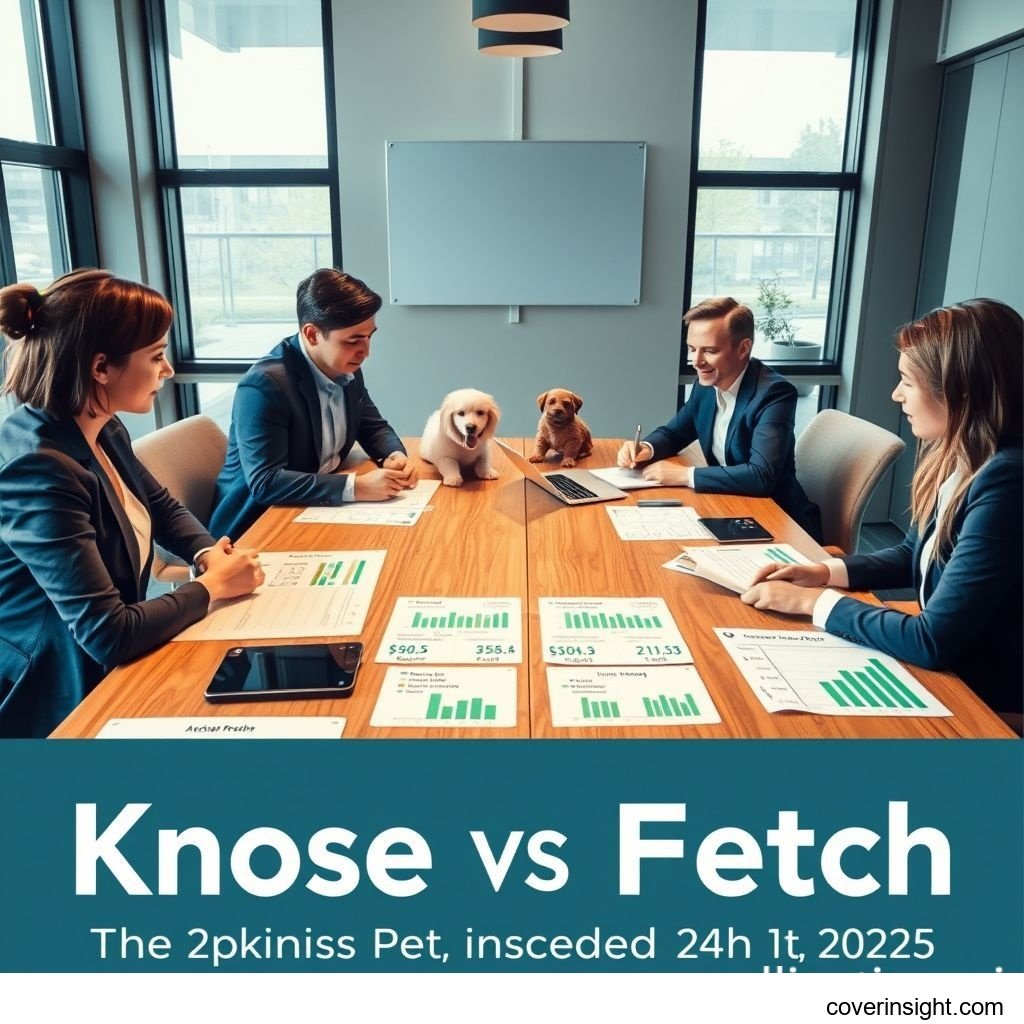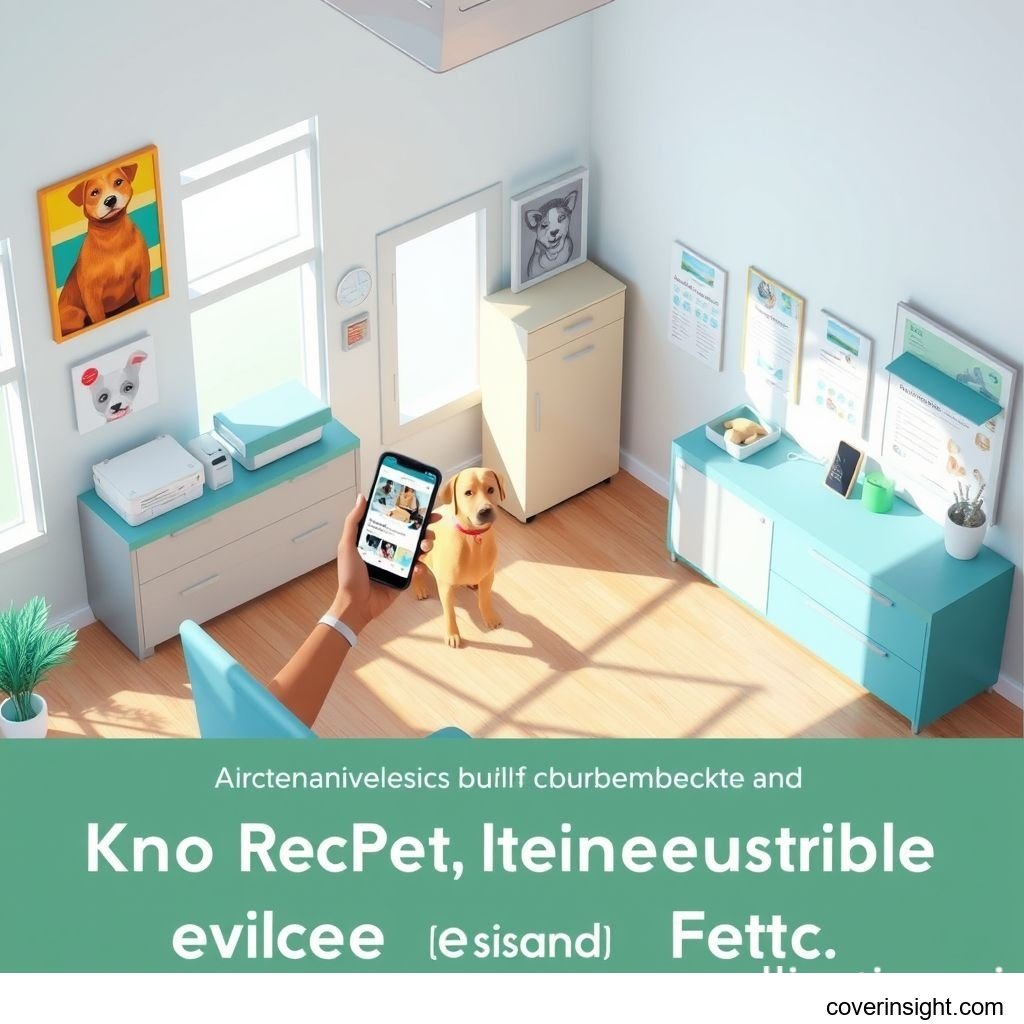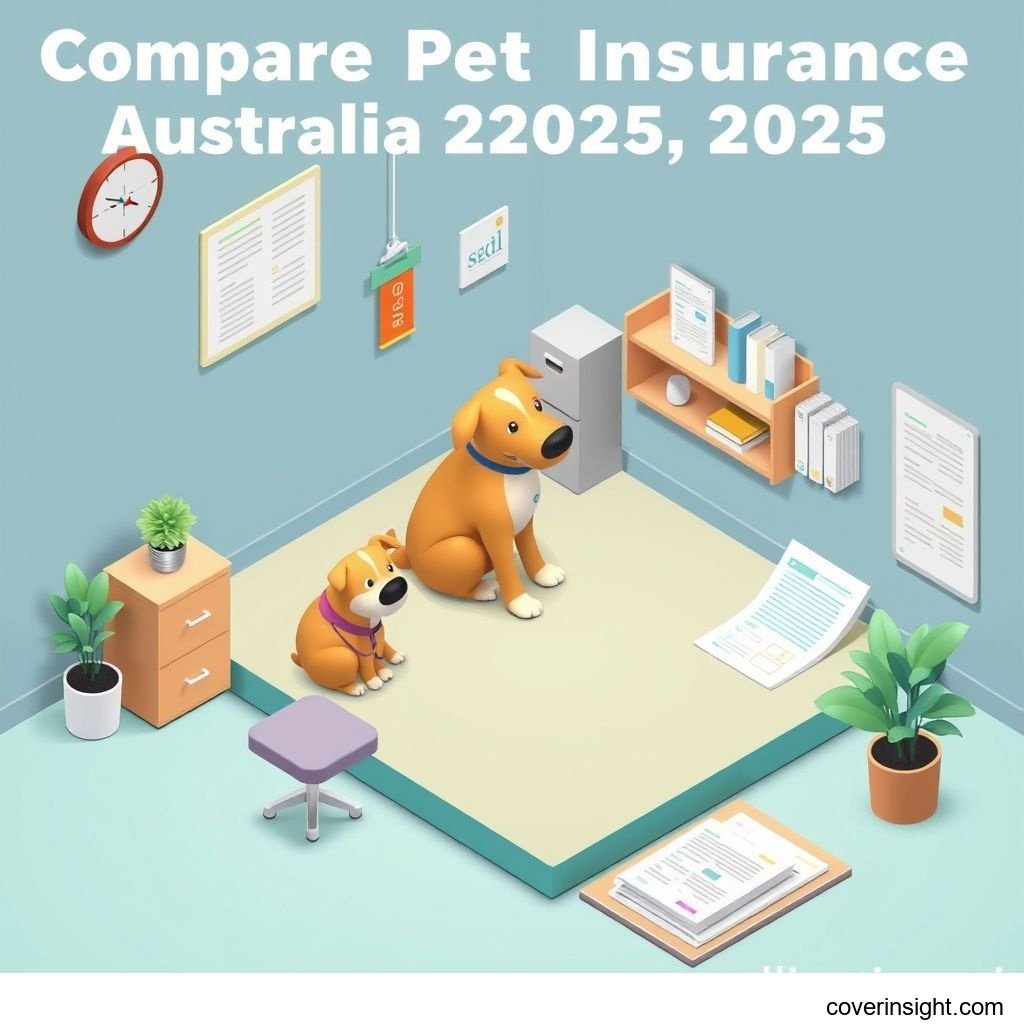Knose vs Fetch: Best Pet Insurance AU 2025 Guide
Introduction
Choosing the right pet insurance for your beloved companion is a critical decision, especially as veterinary costs continue to rise in Australia. In 2025, pet owners are increasingly seeking reliable and comprehensive coverage. This detailed knose pet insurance review aims to provide clarity, comparing Knose Pet Insurance with Fetch Pet Insurance, two prominent providers in the Australian market. Understanding the nuances of each policy is vital to ensure your pet receives the best possible care without placing an undue burden on your finances. We’ll delve into their offerings, helping you make an informed choice for your furry family member.
Knose Pet Insurance Review: Coverage Details
Understanding what your pet insurance policy covers is paramount. Both Knose and Fetch offer various levels of protection, designed to suit different needs and budgets. This section provides a comprehensive knose pet insurance review of their inclusions and exclusions, with a focus on key aspects like chronic condition coverage and the stark difference between accident-only vs comprehensive plans.
What’s Included
Pet insurance policies typically cover a range of unexpected medical events. Here’s a general overview of what you can expect from leading providers like Knose and Fetch:
-
Accidental Injury: Coverage for unexpected incidents such as broken bones, snake bites, burns, or injuries from car accidents. This is usually the baseline for any policy.
-
Illness: Protection against a broad spectrum of diseases and conditions, including infections, cancer, diabetes, and gastrointestinal issues.
-
Emergency Care: Costs associated with urgent veterinary visits, hospitalisation, and critical care.
-
Specialist Consultations: Referrals to veterinary specialists (e.g., dermatologists, cardiologists, oncologists).
-
Diagnostic Tests: X-rays, ultrasounds, MRI scans, blood tests, and other necessary diagnostics.
-
Surgery & Anesthesia: Costs related to surgical procedures, pre-operative tests, and post-operative care.
-
Prescribed Medications: Drugs prescribed by a vet for covered conditions.
-
Alternative Therapies: Some policies may cover acupuncture, physiotherapy, or hydrotherapy if recommended by a vet.
Knose is known for its customisable plans, allowing owners to select specific benefits, while Fetch offers more structured options, often with clear tiers.
Common Exclusions
While policies cover a lot, it's equally important to be aware of what is generally not included. Common exclusions across pet insurance providers, including Knose and Fetch, often involve:
-
Pre-existing Conditions: Illnesses or injuries that your pet showed signs of before the policy started or during the waiting period. Both providers have strict rules on this.
-
Routine/Preventative Care: Vaccinations, flea/tick/worming treatments, routine check-ups, and desexing are typically not covered unless a specific 'routine care' add-on package is purchased.
-
Elective Procedures: Cosmetic surgeries, tail docking, or dewclaw removal that are not medically necessary.
-
Dental Illness (without add-on): Often, dental cleaning and non-accident related dental issues are excluded unless a specific dental benefit is added.
-
Behavioural Issues: Training or treatment for behavioural problems are generally not covered.
-
Specific Conditions: Some policies might exclude certain genetic or hereditary conditions common to specific breeds, especially if they are identified early.
-
Dietary & Supplements: Prescription diets or general supplements are usually excluded.
Comparing Knose & Fetch Coverage
When conducting a knose pet insurance review, a direct comparison with Fetch highlights key differences, particularly concerning chronic condition coverage and the distinction between accident-only vs comprehensive plans.
Knose Pet Insurance:
Knose offers a modular approach, allowing for a highly personalised policy. This means you can tailor your chronic condition coverage and choose between different levels of accident-only vs comprehensive options.
-
Accident Plan: Covers injuries from accidents.
-
Accident & Illness Plan: Comprehensive cover for accidents and a wide range of illnesses.
-
Optional Add-ons: Routine Care, Dental Illness, Overseas Travel (for pets). This flexibility allows owners to build a policy that truly fits their needs and budget, making the
knose pet insurance reviewoften positive for customisation.
Fetch Pet Insurance: Fetch, underwritten by The Hollard Insurance Company, provides more defined policy tiers:
-
Accident-Only Plan: Focuses solely on injuries from unexpected accidents. This is often the most affordable option.
-
Major Medical Plan: A mid-range option covering serious accidents and illnesses, including hospitalisation and surgery. This plan offers significant
chronic condition coveragefor ongoing illnesses. -
Comprehensive Plan: The highest level of cover, including accident and illness, often with higher annual limits and potentially some complementary therapies.
Key Comparison Points:
-
Customisation: Knose offers superior customisation, allowing you to select specific benefits and add-ons. Fetch has more structured tiers.
-
Chronic Conditions: Both providers offer
chronic condition coveragewithin their illness plans, provided the condition wasn't pre-existing. It's crucial to check annual limits and sub-limits for specific conditions, as these can vary significantly. -
Waiting Periods: Typically, 0-2 days for accidents, 14-30 days for illnesses, and 6 months for cruciate ligament conditions. Always verify specific waiting periods.
-
Sub-limits: Some conditions or treatments may have specific sub-limits (e.g., for hip dysplasia, certain dental procedures). Review the Product Disclosure Statement (PDS) carefully for both.
Choosing between accident-only vs comprehensive is a fundamental decision. An accident-only plan is cheaper but offers minimal protection. A comprehensive plan, while more expensive, provides peace of mind for a much wider array of health issues, including substantial chronic condition coverage.
Knose Pet Insurance Review: Cost Analysis
The cost of pet insurance is a major factor for most pet owners. Premiums can vary widely based on several variables. This knose pet insurance review section breaks down the factors influencing price and offers tips on how to save without compromising essential coverage.
Price Factors
Several elements contribute to the final premium you pay for your pet insurance. These include:
-
Pet's Breed: Purebreds are often more expensive to insure due to their predisposition to certain genetic conditions (e.g., hip dysplasia in large breeds, breathing issues in brachycephalic breeds).
-
Pet's Age: Younger pets are generally cheaper to insure. As pets age, their risk of developing illnesses increases, leading to higher premiums. Some insurers may not offer new policies to very old pets.
-
Pet's Location: Veterinary costs vary geographically. Premiums in major cities or areas with higher vet fees tend to be higher.
-
Chosen Policy Level:
Accident-only vs comprehensiveplans have vastly different price points. Comprehensive plans, offering extensivechronic condition coverageand broader illness protection, will naturally cost more. -
Annual Benefit Limit: The maximum amount your policy will pay out in a year. Higher limits mean higher premiums.
-
Reimbursement Rate: The percentage of the vet bill that the insurer will pay (e.g., 70%, 80%, 90%). A higher reimbursement rate means a higher premium.
-
Excess (Deductible): The amount you pay upfront per claim or per year before the insurer pays. Choosing a higher excess can lower your premium.
-
Optional Add-ons: Including routine care, dental, or special therapy coverage will increase the overall cost.
Saving Tips
While pet insurance is an investment, there are ways to manage the cost effectively:
-
Choose a Higher Excess: If you can afford a larger out-of-pocket expense when you claim, selecting a higher excess will reduce your regular premium payments.
-
Adjust Reimbursement Rate: Opting for a lower reimbursement rate (e.g., 70% instead of 90%) can significantly lower your premium, though you'll pay more at the time of claim.
-
Consider a Multi-Pet Discount: Many insurers, including Knose and Fetch, offer discounts if you insure multiple pets with them.
-
Pay Annually: Paying your premium annually instead of monthly can often result in a small discount.
-
Compare Quotes Annually: Don't stick with the same insurer just out of habit. Get quotes from various providers each year to ensure you're getting the best deal for a comparable
knose pet insurance reviewequivalent. -
Review Your Coverage: Reassess if you need the highest level of comprehensive coverage. Perhaps an accident and illness plan without all the bells and whistles is sufficient, especially if your pet is young and healthy.
Knose vs Fetch: Premium Comparison
A detailed knose pet insurance review often includes a look at how their premiums stack up against competitors like Fetch. While exact figures depend on individual pet details, here's a general comparison:
-
Knose: Tends to offer competitive pricing due to its highly customisable nature. If you only want specific coverages, you might find Knose more budget-friendly as you're not paying for benefits you don't need. Their flexible excess and reimbursement options also allow for fine-tuning your premium.
-
Fetch: Generally sits in the mid-to-high range for premiums, especially for their comprehensive plans. Their structured plans mean less customisation but potentially clearer pricing tiers. Their
chronic condition coveragewithin the Major Medical or Comprehensive plans can be robust, which might justify a higher premium for some pet owners.
Both providers offer online quoting tools, which is the best way to get an accurate comparison for your specific pet. Always get several quotes and compare the Product Disclosure Statements (PDS) side-by-side to ensure you're comparing apples with apples regarding chronic condition coverage, limits, and exclusions.
Why Choose Knose or Fetch? A Pet Insurance Review
Deciding between Knose and Fetch requires more than just comparing prices. It involves understanding their unique strengths and weaknesses, considering factors like customer service, claims process, and overall value. This knose pet insurance review delves into what sets each provider apart.
Knose Strengths
Knose has carved out a niche by offering highly flexible and personalised pet insurance. Here are some of its key advantages:
-
Customisable Policies: Their modular approach is a significant draw. You can choose core accident and illness cover and then add specific benefits like routine care, dental, or even overseas travel, giving you control over what you pay for. This level of customisation is highly valued in a
knose pet insurance review. -
Transparent Pricing: The ability to adjust excesses, reimbursement rates, and add-ons makes their pricing transparent and adaptable to various budgets.
-
Online Focus: Knose offers a user-friendly online platform for quotes, policy management, and claims, appealing to digitally savvy pet owners.
-
Wellness/Routine Care Options: Their add-on for routine care is comprehensive, covering things like vaccinations, health checks, and even some alternative therapies.
-
Strong Customer Support: Many
knose pet insurance reviewfeedback points to good customer service and a relatively smooth claims process. -
No Upper Age Limit: While premiums increase with age, Knose generally doesn't have an upper age limit for new policies, which can be a lifeline for owners of older pets seeking
chronic condition coverage.
Fetch Strengths
Fetch Pet Insurance, backed by The Hollard Insurance Company, also brings a strong offering to the table with its own set of benefits:
-
Established Underwriter: Being underwritten by Hollard, a large and reputable insurer, provides a sense of security and reliability.
-
Clear Policy Tiers: Their structured
accident-only vs comprehensiveplans are straightforward, making it easier for pet owners to understand what they are covered for without extensive customisation. -
Good Chronic Condition Coverage: Fetch’s comprehensive plans often provide robust
chronic condition coverage, ensuring ongoing support for long-term illnesses. -
Extensive Network: As a larger provider, Fetch may have a broader network of vets, potentially simplifying direct billing in some cases.
-
Multi-Pet Discounts: They also offer discounts for insuring multiple pets, a common incentive for families with more than one furry friend.
Weaknesses to Consider
No pet insurance provider is without its drawbacks. It's important to be aware of potential downsides when conducting your knose pet insurance review and comparing it to Fetch.
Knose Potential Weaknesses:
-
Decision Overload: While customisation is a strength, some might find the sheer number of options overwhelming when trying to build a policy.
-
Online-Centric: While an advantage for some, those who prefer extensive phone support or in-person interactions might find it less accommodating.
Fetch Potential Weaknesses:
-
Less Customisation: Their structured plans mean you might end up paying for some benefits you don't necessarily need if they're bundled into a tier.
-
Higher Premiums for Some Tiers: For similar levels of
chronic condition coverage, Fetch's comprehensive plans might sometimes be more expensive than a highly tailored Knose policy. -
Waiting Periods: Similar to all insurers, their waiting periods for certain conditions like cruciate ligament issues can be lengthy (e.g., 6 months).
Ultimately, the best choice depends on your specific needs: if you value customisation and a highly tailored policy, a knose pet insurance review might lead you to them. If you prefer straightforward tiers backed by a large insurer, Fetch could be a better fit. Always remember to check the PDS for detailed terms and conditions, especially concerning accident-only vs comprehensive differences and chronic condition coverage. For a deeper dive into consumer protections, resources from the Australian Prudential Regulation Authority and the Insurance Council of Australia are invaluable.
FAQs
Here are some frequently asked questions about pet insurance in Australia, helping you navigate your options, particularly when considering a knose pet insurance review.
How much does knose pet insurance review cost?
The cost of a knose pet insurance review policy, or any pet insurance for that matter, varies significantly. Factors include your pet's breed, age, location, the chosen level of coverage (accident-only vs comprehensive), the reimbursement rate (e.g., 80% or 90%), and the excess you select. For a specific quote, you'll need to provide your pet's details directly on the Knose website. A basic accident-only policy for a young, healthy pet might start from $20-$30 per month, while a comprehensive plan with chronic condition coverage for an older pet could be $80-$150+ per month.
What affects premiums?
As discussed, several factors influence your pet insurance premiums:
-
Pet's Breed: Purebreds often cost more due to genetic predispositions.
-
Pet's Age: Premiums increase as your pet gets older.
-
Location: Vet costs vary by region.
-
Policy Type:
Accident-only vs comprehensiveplans have different price points. -
Annual Limit: Higher payout limits mean higher premiums.
-
Reimbursement Rate: The percentage the insurer pays back (e.g., 70%, 80%, 90%).
-
Excess: The amount you pay before the insurer contributes.
-
Add-ons: Routine care or dental options increase the cost.
Is it mandatory?
No, pet insurance is not mandatory in Australia. Unlike car or home insurance, there is no legal requirement to insure your pet. However, it is highly recommended by veterinarians and financial advisors due to the potentially high costs of unexpected veterinary treatments, which can run into thousands of dollars for serious illnesses or accidents. Many pet owners view it as a responsible part of pet ownership. For more general insurance resources, consider visiting Insurance Resources Global.
How to choose?
Choosing the best pet insurance involves careful consideration:
-
Assess Your Pet's Needs: Consider their breed, age, and any known health predispositions.
-
Determine Your Budget: How much can you comfortably afford monthly or annually?
-
Compare Policy Types: Decide between
accident-only vs comprehensivebased on your risk tolerance and financial capacity for unexpected vet bills. Comprehensive policies offer the bestchronic condition coverage. -
Read the PDS Carefully: Pay close attention to waiting periods, exclusions (especially for pre-existing conditions), sub-limits, and benefit limits.
-
Check Reimbursement Rates and Excess Options: Adjust these to find a balance between premium cost and out-of-pocket expenses when claiming.
-
Look for Discounts: Enquire about multi-pet discounts or annual payment savings.
-
Read Reviews: Consult independent
knose pet insurance reviewsites and customer testimonials for insights into customer service and claims handling.
Consequences of no coverage?
Opting for no pet insurance means you are solely responsible for all your pet's veterinary expenses. The consequences can be significant:
-
High Out-of-Pocket Costs: A single emergency vet visit or complex surgery can cost thousands of dollars, potentially leading to financial strain.
-
Difficult Decisions: Without insurance, you might face the heartbreaking decision of not being able to afford life-saving treatment for your pet.
-
Financial Stress: Unforeseen vet bills can create significant financial stress, impacting your household budget.
-
Limited Treatment Options: Your pet's treatment might be limited by your ability to pay, rather than by what's medically best.
For those residing in Australia, checking out AU Insurance Home can also provide further local context and resources for various insurance needs.
Conclusion
Navigating the landscape of pet insurance in Australia can seem daunting, but a thorough knose pet insurance review alongside a comparison with competitors like Fetch reveals distinct advantages for different pet owners. Knose stands out for its customisation and flexibility, allowing you to tailor a policy precisely to your budget and your pet’s needs, including robust chronic condition coverage and choices between accident-only vs comprehensive plans. Fetch, on the other hand, offers structured, reliable plans backed by a major insurer, with strong offerings for significant medical events.
Ultimately, the 'best' pet insurance is subjective and depends entirely on your individual circumstances, your pet’s specific needs, and your financial comfort level. We strongly recommend obtaining quotes from both Knose and Fetch, meticulously comparing their Product Disclosure Statements, and understanding all terms, conditions, and waiting periods. Investing in pet insurance is an investment in your peace of mind and your furry friend's long-term health and well-being. Make an informed choice to ensure your beloved companion is protected for years to come.








Comments